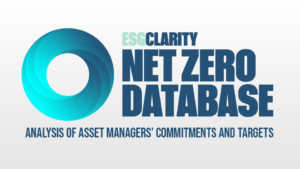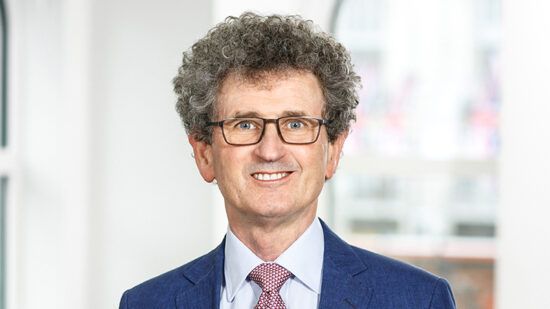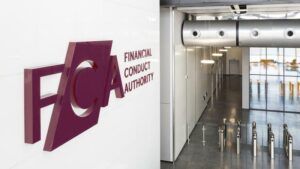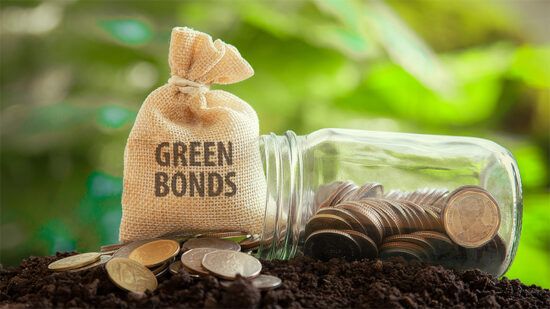In this Green Dream episode, Holger Mertens, managing director and head portfolio manager of global credit at Nikko Asset Management, discusses how the new EU Green Bond Standard could further fragment the green bond landscape and create a tiered system based on the ‘greenness’ of a bond.
He also shares his thoughts on how investors must engage with sustainability-linked bond issuers to make goals and penalties more robust, as well as on how green and sustainable bond issuance in the US is “effectively dead” in the wake of Trump’s election victory.
Watch the full video interview above and read the transcript below.
MN: Welcome back to the Green Dream video series. I’m Michael Nelson, and today I have the pleasure of speaking to Holger Mertens, he’s the managing director and head portfolio manager of global credit at Nikko Asset Management. Holger, it’s a pleasure to meet you.
HM: Thank you for having me here.
MN: We’re going to be talking about bond funds, issuance and opportunities in the markets today, but I wanted to start with the US election result because it’s, sort of, loomed large in conversations on fixed income since, particularly with rising yields on government bonds, the threat of increased tariffs into the US market and concerns over interest rates. I saw you’d described US green and sustainable bond issuance as “effectively dead” in the US now. Why do you think that is?
HM: Well, if you’re looking on issuing this year, the Euro market was the strongest market, was driving growth and the US were, like, less there compared to the European market. So, we think with the uncertainty about what the new administration will bring for ESG investing probably these issuance levels will be even more, like, less than what we have seen in the current year. And so we think uncertainty will hold companies back issuing sustainable bonds in the US.
MN: Also, before the recording, we talked about, sort of, the potential for ESG to go through a bit of volatility as well. We’ve already seen that in the US. Would you be able to describe a little bit more about that?
HM: Yeah, I mean, like, we have seen all the headlines and all the noise, and then now the new administration is coming in and we then really have to see what does this bring forth in terms of, like, a selective change in NGS and fast.
Really the big thing to watch is what is happening to the Inflationary Reduction Act. So, this was beneficial to a lot of red states, though we wonder if this is just taking away for the sake of taking things away or as long as it’s benefiting the voters of the new administration, some elements of it will stay in place.
As corporate credit people, the really important thing to watch is what is happening to already avoided tax credits under the Inflation Reduction Act. So, some companies like Orsted have executed big projects in the US and so the business case for this project was based on receiving these tax credits and according to the last management call, the company believed that they would keep them. But these are things to watch over the coming months, and so as bottom-up researchers, this will be quite an interesting time for us.
MN: So, as you’ve already alluded to, the EU is of course going in the opposite direction, perhaps creating a bit further divergence. How does that affect the decisions an investor and a bond fund manager makes, given the increased potential for volatility?
HM: Well, I mean, like, we are active portfolio manager, and then, to manage and portfolio actively, you need liquidity and then this is what is more likely found in the green bond market or sustainable bond market in Europe, while US dollar investments will be probably a bit more more buy and hold. Harder to trade. So, actually, probably even less volatile given that liquidity is probably more in the Euro area. So, in order to execute an active strategy, the Euro-denominated green bonds and sustainable bonds will be probably a better place.
MN: To add to that, so, the EU green bond standards, sort of, came into effect quite recently. How do you think that will change things?
HM: The green bond market is probably getting more fragmented. Like, at the moment all bonds are issued in accordance with the IGMA standards. Now, the new EU standard’s coming in, which are probably a higher level of standards. So, like, you have to do a pre-allocation report about what you’re going to do with the money, and a post-allocation report that 85% of the proceeds of the bonds have to be allocated in accordance with. So, this is quite a high ask for companies, and, so, not all the companies can get to this 85%. So, for utilities or real estate companies, they probably have enough business to just allocate 85% of the proceeds of a bond or up to 100% to taxonomy projects.
But there’s also a third standard which, like, if you can’t get to 85%, you can follow the voluntary template of the EU and just report on the allocation you have done. So, there are kind of three different, sort of, green bonds. I mean you have the bonds in accordance with the ICMA standards. You have bonds in accordance with the new EU standards and then you have companies which issue bonds in accordance with with… Follows the voluntary protocol of the EU, where you’re not fully aligned with their principles, but at least you agree on some of the principles, and there will be, probably, a pricing difference between the three standards and this is what we expect. But, so far, we have to see the first issuer coming out and issue in accordance with the EU principles, so we have to see how if this is being adapted by the market or not, but I could see that there’s a more fragmented market with different tiers of greenness coming up.
MN: It sounds like 2025 is going to be a, sort of, a year of wait and see.
HM: Yeah, indeed.
MN: Just thinking back to 2024, sustainability-linked bond issuance looks like the only category that didn’t experience growth. Why do you think this was the case, and what would you like to see happen to change that trajectory?
HM: Well you’ve got two sort of bonds. You’ve got the use of proceed bonds, this is the green bond, social bonds, sustainability bonds. And then you got the sustainability-linked bonds. The sustainable link bonds are not use of proceed bonds. There, the proceed goes for general corporate purposes, and so with the green bond you have certainty what will happen to the money. With the sustainable link bond you don’t have the certainty, what you have, you get certain goals the companies are committing to, like greenhouse emission reduction and they usually attach to this goal some penalties they face if they don’t meet this goal.
But, like, if you run an Article 9 fund, as we do, you appreciate the certainty about what is going to happen with the money which you get with the green bond. And so, a lot of manager therefore prefer use of proceed bonds over sustainably-linked bonds. And this leads to a difference in terms of the pricing. So, sustainable link bonds trade with a discount compared to the use of proceed bonds.
Also, this group gave themselves a kind of bad name because some of the issuers, they were setting these goals pretty low. So, making it a low hurdle to jump. And also the penalties were structured in a way which weren’t comfortable for investors, sometimes only the penalties kicked in or will kick in a year before the bonds are maturing, so it’s not really then a penalty. And all of this, yeah, is making investors less comfortable with the sort of structure. Although the idea is brilliant. Like, you commit to a goal and then if you don’t meet this goal you face a penalty. I think we have to do a bit more engaging and work with the issuers to make this structure a comfortable structure for investors.
MN: Hopefully we see a little bit more of that in 2025 then. What do you expect to be the biggest growth areas in the green and sustainable bond space in 2025?
HM: I think it will be a bit like ’24. I mean in… If you’re looking on the group of the sustainable bonds, the green bonds were the biggest growth area. And in particular, the Euro-denominated green bonds was the strongest growth area and I guess this is where the biggest push and need for transition is there and this is why we think the ’24 supply growth will look more or less the same in ’25.
MN: You’ve pre-empted my next question, actually, which is where does transition finance fit into this?
HM: Yeah, like, if you’re looking on which are the biggest sectors issuing in the green bond market these are utilities and real estate companies. And this is not a big surprise because these are the sectors which have to do the most work on the transition. And so at the moment, the sustainable bond market is mostly financing transition like, I mean, if you’re a kind of zero carbon company, this is more early start-up kind of businesses which rather go for venture capital than issuing in the investment grade bond market. So, the companies we are usually dealing with are just blue-chip companies which have to manage the transition. This is why you find in our market mostly transition financing.
MN: And to, to finish off with our usual final question. What’s your favourite sustainable snack or drink?
HM: Well, I guess everything I make myself. So, grain bars, oat milk, all can be done by yourself. You don’t waste on packaging and also you know what has gone into it.
MN: I think that’s about all we have time for, thank you for speaking with me today, Holger.
HM: Thank you for having me here, and really good questions. Thank you.








